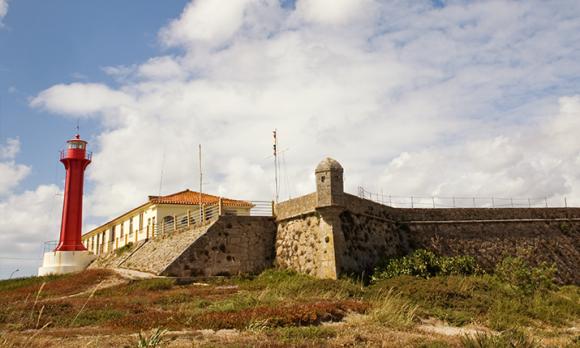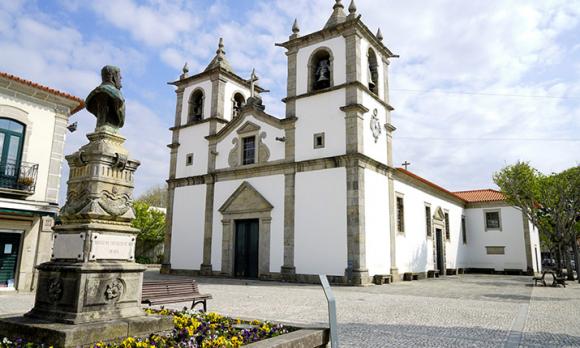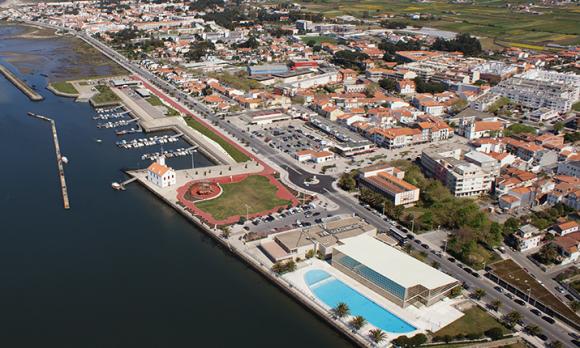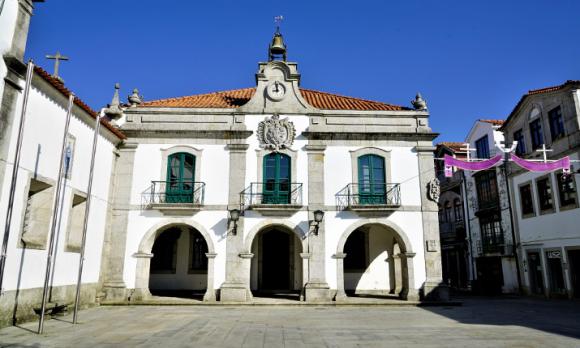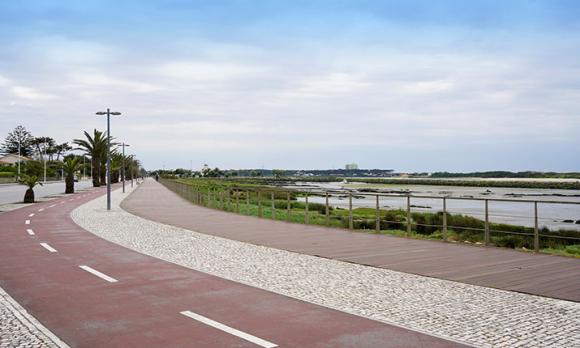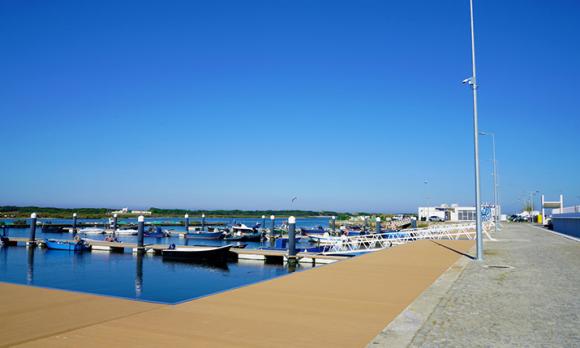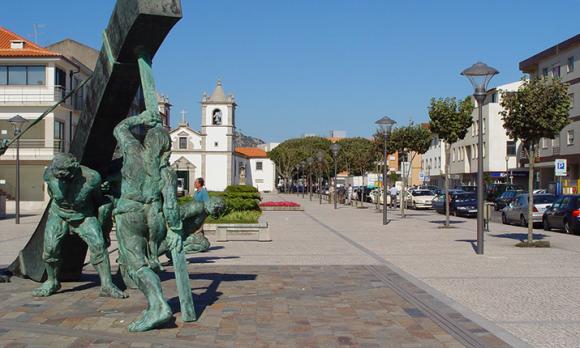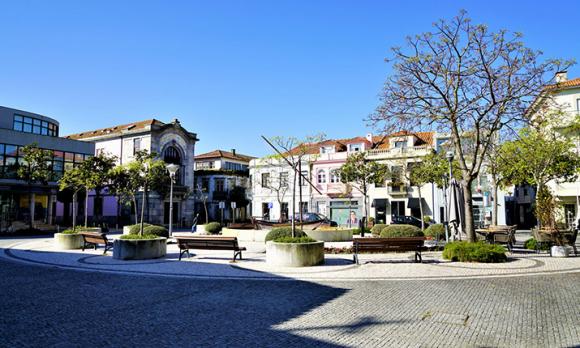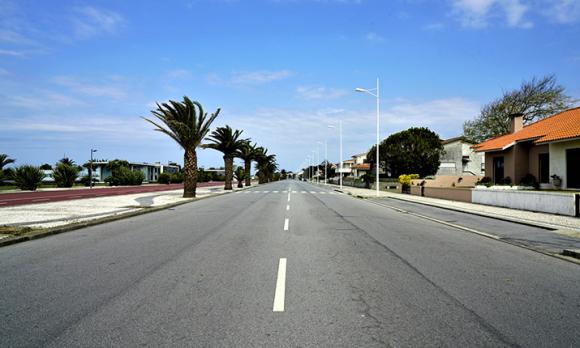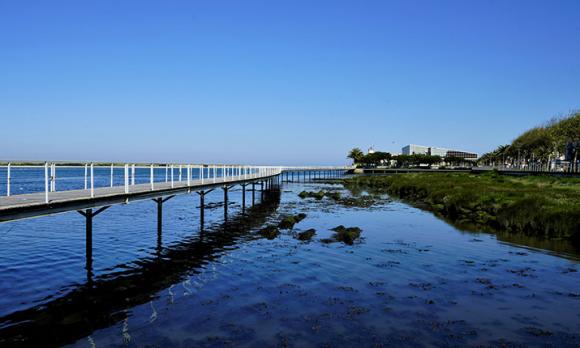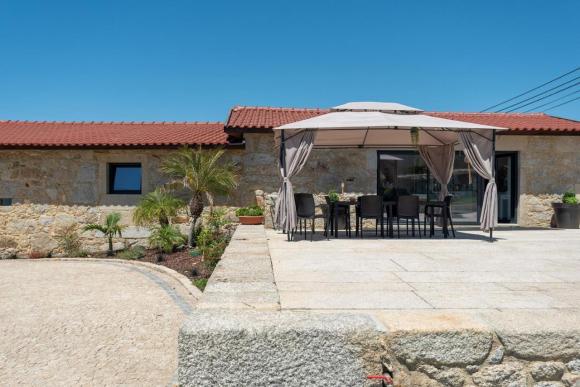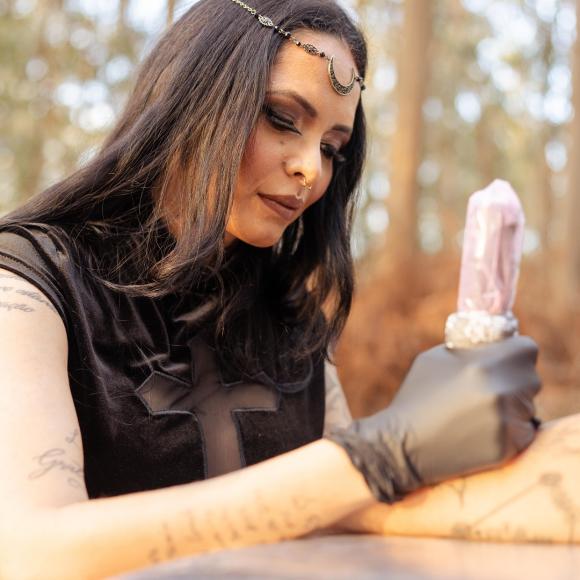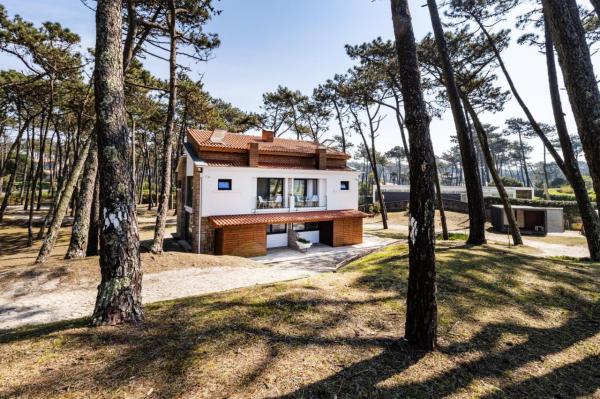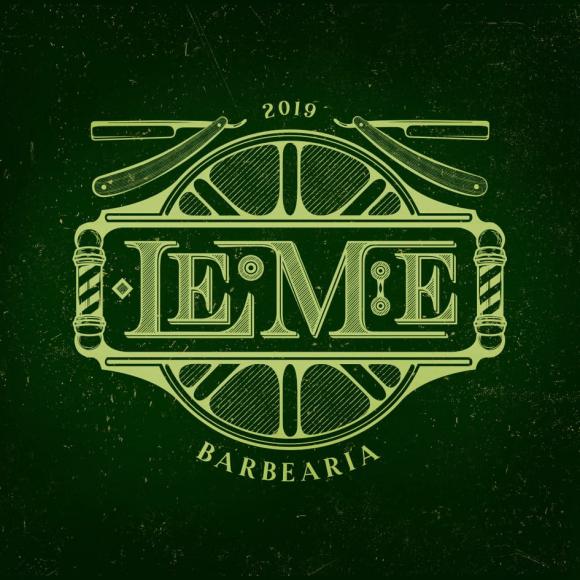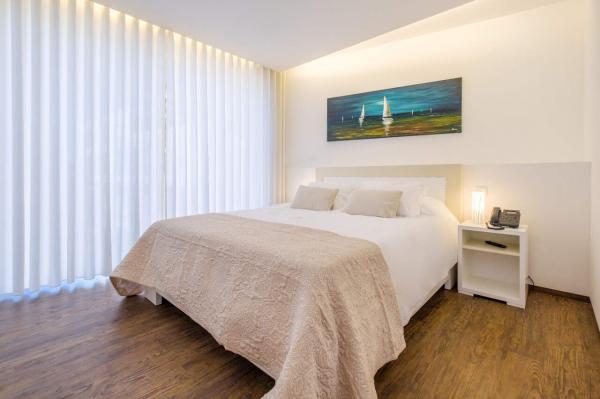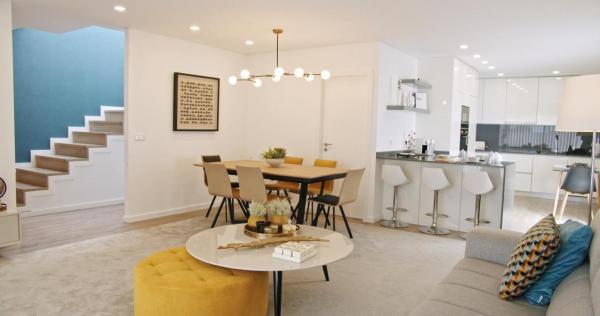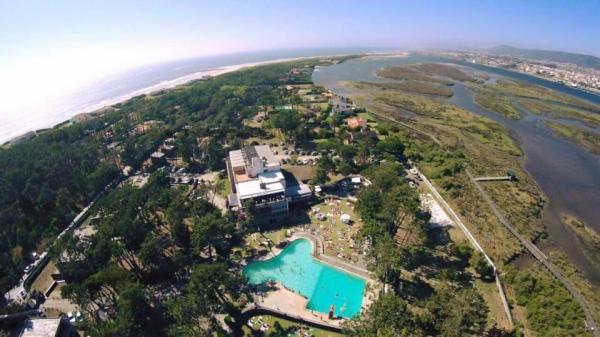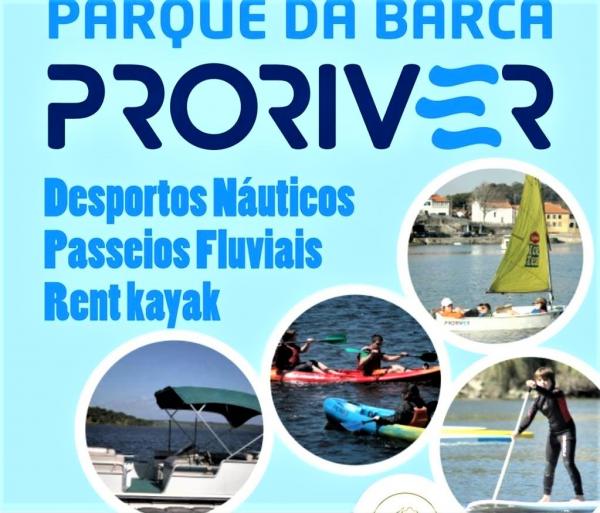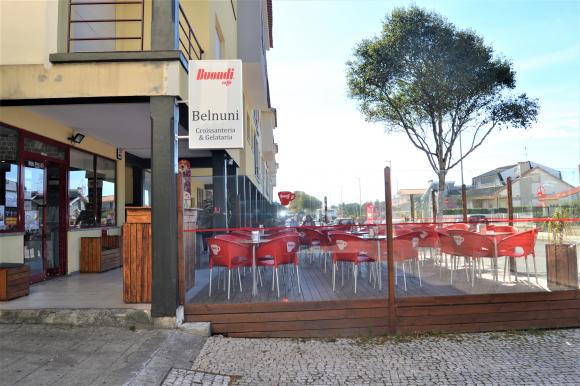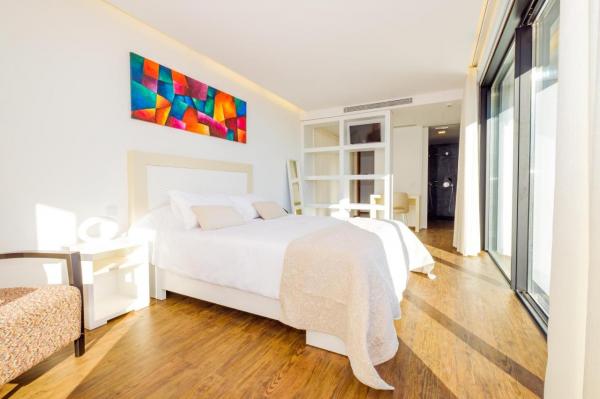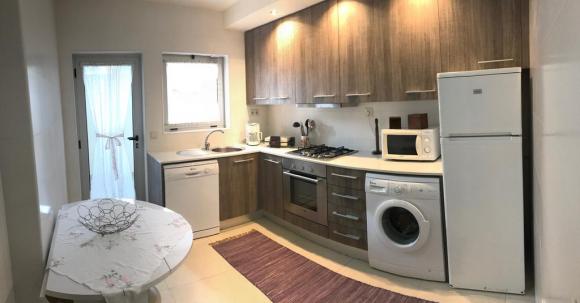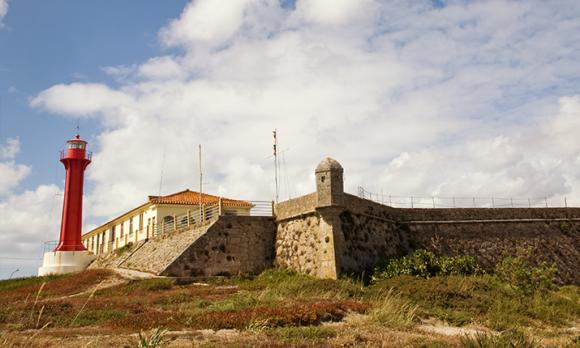
Roteiro das Freguesias - Esposende
In order to get to know all the history, Heritage and Nature of Esposende, the Municipality has created several Itineraries that pass through its Parishes, which you must visit ...
The elevation of Esposende a Vila dates back to August 19, 1572, during the reign of D. Sebastião (1554-1578). On December 16, 1886 it acquired the category of Municipal Judge and, on October 27, 1898, that of Municipal District. It was after the golden age of seafaring, which took place between the 14th and 15th centuries, that Esposende experienced its peak - between the 16th and 18th centuries - through maritime trade, construction and ship repair.
.
Esposende
Description
This city tour starts at the Esposende Tourist Information Center, a space composed of three areas, namely the service area, auditorium and multipurpose space. Here you can watch a promotional film about the municipality, access the most diverse tourist information through personalized contact with employees, collect some paper supports or simply explore the interactive table. In addition, you can enjoy exhibitions that take place temporarily or purchase some local products and crafts. The interactive storefront that is located outside the building is available 24 hours a day.
Via Rua Rodrigues de Faria, a little south of the Tourist Information Center building, you reach Largo Dr. Fonseca Lima. Here you can pay a visit to the Municipal Museum of Esposende, which is installed in a building from the beginning of the 20th century (1911), at the time the Teatro-Club de Esposende, which left the line of the architect Miguel Ventura Terra. In the 1990s, the City Council decided to adapt it to the Municipal Museum, which it inaugurated in 1993, under the design of Bernardo Ferrão, architect of the so-called Escola do Porto. The Esposende Museum reflects the land where it was created. On the ground floor is the Sala dos Azulejos, intended for temporary exhibitions that owes its name to the magnificent ashlar tile coeval from 1911, designed by Ventura Terra himself. In the two exhibition areas, on the 1st and 2nd floor, the Museum shows the local culture and heritage.
In Largo Comandante Carlos de Oliveira Martins, opposite Dr. Fonseca Lima, is located the small Chapel of Senhor dos Aflitos. The fishermen of Esposende here erected a stone cross, where they painted a figure of Jesus Christ, calling him Lord of the Afflicted, in a clear evocation of the fears brought about by the sea and fishing. On that same cross, later, a small niche was built that, later, in 1880, was transferred to its current location. In 1969, remodeling works were carried out, with only the façade of the previous building and the original painted cruise preserved. The temple has a rectangular plan, with the facade facing west. The front has a triangular pediment, topped by a trilobed cross on a plinth. The side spiers are rectangular in base.
After these visits, moving through Rua Barão de Esposende and Largo Marquês do Pombal, to the south, we come to another square, Pelourinho. The Pelourinho de Esposende would have taken place in front of the City Hall, until 1910, when the state of degradation in which it found itself forced it to be dismantled and only later, between 1925 and 1929, rebuilt in the place where it can now be seen. It is an interesting example of this symbol of council power. On the traditional base, in this case of three steps, rests the plinth with cushion-like faces. The shaft - the column - is octave and topped by a capital with plant motifs and a cross of Christ. At the top you can see an armillary sphere, symbol of the Portuguese navigations of five hundred. Notice that in the middle of the shaft is still an iron ring. The pillories were originally intended to publicly punish those who violated the county's laws. Such punishments could include public display or physical punishment. The convict was tied to the pillory to serve his sentence there, and that was the purpose of the ring. Even when public punishments ceased to take place, Pelourinho maintained the symbolism of the municipality's power, of the autonomy of men free from bondage or lordship.
Via Narciso Ferreira Street, Largo Sacadura Cabral is reached, where the old Grémio da Lavoura de Esposende building is located, converted in 2011 into the Rodrigues Sampaio Municipal Forum, the headquarters of the Esposende Municipal Assembly and which hosts the holding of several types of cultural events, such as shows or workshops. It is based on a house dating from the 19th century. XVIII, which presented on its facade compositional elements of very careful stonework - cornerstones, cornice and potting, a manorial house attributed to a foreign family of maritime traders.
From Rua Dr. José Manuel Oliveira one arrives at the Municipal Library Manuel de Boaventura. The installation in Esposende of a fixed library of the Calouste Gulbenkian Foundation dates back to the 1980s. At the end of that decade, the Municipality decided to proceed with the construction of a municipal library, which opened in 1992. The complex that is currently occupied by the Municipal Library is the result of an intervention by architect Bernardo Ferrão in several buildings, from the 16th and 18th century, to which it was built from scratch. The arch in one of them gives the group its name: Casa do Arco. The Library has an area of more than 1,100 m2, with several areas dedicated to reading, but also to audiovisuals, temporary exhibitions and other cultural activities, such as cinema, theater, conferences and poetry recitals.
In addition to general funds, the Municipal Library retains three special funds, with relevant value: the Poet António Correia de Oliveira Fund, the Silva Vieira Collection Fund and the Manuel de Boaventura Fund. In honor of the latter, the library was also named, Manuel de Boaventura Municipal Library.
Whoever goes up Rua da Senhora da Saúde, from Praça do Município, and overtakes the national road Porto-Viana do Castelo (EN 13), notices a wooded shrub where the Chapel of Senhora da Saúde is implanted. gives access gives the place a palpable bucolism. The current chapel of Nossa Senhora da Saúde was not always known by this name. This denomination is, even, very recent. In its origin it was dedicated to S. Sebastião, under whose title it was designated for several centuries. The original chapel dates from the middle of the 16th century, but the current one is from the end of the 18th century when it started to be called the chapel of S. Sebastião and Soledade. The front is very simple, symmetrical and the white of the facade contrasts with the gray of the granite of the frames and angles. This small Marian sanctuary consists of a chancel, nave, choir and sacristy and is surrounded by a large churchyard enclosed by a granite wall and dotted with leafy sycamores bordering the alley of service, trees that the people call the souto. On the south wall you can see a blue tile panel, with a polychrome border, whose design is by Manuel Gonçalves Viana, representing Nossa Senhora da Saúde, with the following inscription: «N. Our Lady of Health, pray for us - Salus Infirmorum - Ave Maria - N. Senhora da Saúde of Esposende - 300 days of indulgences to whom a Our Father, four Hail Marys and a Gloria Patri pray, before this miraculous image » . Since 1902, a year after placing the image of Nossa Senhora da Saúde, the party took its name, assumed the proportions and characteristics of the great pilgrimage of Minho and came to be called “Festa da Vila”. Currently it is designated as Festa da Cidade and is held every year on August 15th.
Returning to the city center, through Rua da Senhora da Saúde, here is Praça do Município. The Igreja da Misericórdia is part of a complex of buildings, which also includes the Casa da Misericórdia, whose fraternity was established in 1595. The current temple dates from 1893, according to an existing inscription inside. Inside the Misericórdia Church, the Chapel of Senhor dos Mareantes is built. It is a chapel with exceptional characteristics, classified as a Property of Public Interest. It is worth stopping to look at the magnificent gilt carving, with a very rich iconography. Also notice the niches that flank the high altar, with passages from the life of Christ (Christ and Zacchaeus and Christ and the Samaritan). Then, install yourself as comfortably as you can and be sure to admire the ceiling, in polychrome carvings, where the twelve Messianic prophets are represented. They are arranged in three series, in groups of four. Try to identify them: Hosea, Joel, Amos and Micah; later, Isaiah, Nahum, Jeremiah and Ezekiel; finally, Daniel, Haggai, Zechariah and Malachi. This ceiling is, in fact, of extraordinary wealth and beauty, and it is easy to understand why this chapel is considered the jewel of Esposende's religious architecture.
At one end of this square, we can see the bust of the poet António Correia de Oliveira, born in São Pedro do Sul, where he was born on July 30, 1879. In 1912, by marriage, he came to live at Quinta de Belinho (Antas, Esposende ). With influences by Antero de Quental and Guerra Junqueiro, his poetry exhibits nationalist nostalgia, with popular roots, cultivating patriotic themes. He dies on February 20, 1960.
The original building where the City Hall is currently installed dates back to the 19th century. XVI, characterized by round arches of open porch on the front. Installed at the intersection of the main traffic routes, it structured the new blocks and streets from itself, corresponding to the initial phase of the urban expansion of the village in 1572. From 1732 to 1758 and, later, between 1870 and 1893, the building was expanded advancing to the central and northern part of the block and the main façade, facing south, topped by a plateau topped with vases at angles, is decorated. In the centerpiece, above the balcony window, the weapons are kept in baroque style, but framed by a small bell tower, equipped with a clock, giving symmetry to the ensemble. Throughout the century. XX underwent several remodeling and expansion works, coming to occupy the entire block.
At Rua 1.º de Dezembro, also known as “Rua Direita”, we can let go of our consumerist spirit and acquire a souvenir in one of the stores of the busiest commercial artery in the city. A real outdoor shopping center.
In the middle of Rua 1.º de Dezembro, in the center of Esposende, there is the Palace of Valentim Ribeiro da Fonseca. Art Nouveau building, built in the early twentieth century, by Valentim Ribeiro da Fonseca, with the risk of architect Miguel Ventura Terra, intended for family housing. This illustrious esposendense was born in the parish of Palmeira de Faro, of this municipality, in the year of 1855. Soon emigrated to Brazil, where he obtained a great fortune. He never forgot his homeland and here he played an important role, having his name linked to the construction of the Teatro-Club and the Hospital. These two buildings, together with their dwelling house, are today a heritage of undeniable value because they all have the trait of the great Portuguese architect Miguel Ventura Terra.
After “Rua Direita”, already in Largo Rodrigues Sampaio, it is the address of the current Igreja Matriz. The primitive chapel, dedicated to Nossa Senhora da Graça, dates back to 1566, which in 1758 gave way to the new Church, remodeled to the headquarters of the village of Esposende, equipped with a main altar and a vaulted main nave, with sacristy, side altars, two pulpits. and two bell towers taking the invocation to Santa Maria dos Anjos, patron saint of Esposende. Between 1885 and 1896 the church was enlarged inside and the facade improved, being built to the neoclassical taste of three bodies. This work results in the installation of the pipe organ. In 1968 the bell tower is also equipped with a clock. Inside, the highlight is the stained glass, the tile panels, the choir and the baptismal font.
In this Largo Rodrigues Sampaio, we stop to appreciate the bust of António Rodrigues Sampaio. Liberal politician and journalist was born on July 25, 1806, in the parish of S. Bartolomeu do Mar., held high public positions, having even served as President of the Council of Ministers of Portugal (1881). Portuguese journalist and politician having, among other functions, exercised the position of deputy, Kingdom pair, minister and President of the Council (head of government). Rodrigues Sampaio was one of the greatest figures of Portuguese liberalism in the 1800s, a unique journalist and exceptional parliamentarian. Controversial, controversial, even revolutionary personality, but always coherent and faithful to his principles and designs, he was a nationally renowned agitator, which would have earned him the nickname 'Sampaio da Revolução', since he became famous as the main editor of the newspaper “ The September Revolution ”. Its flag has always been the constitutional monarchy. He died in Sintra, on September 13, 1882.
Still on the same square, at the top of the west, the Monument to the Man of the Sea. Esposende has always lived facing the Sea and its people have taken sustenance, dangers and misfortunes. In the celebrations of the 500 years of the maritime discoveries, the City Council decided to erect a monument to the “Man of the Sea”. The statue, by the Brothers Bom Pastor, was inaugurated in December 1997. It consists of five figures - four men and one woman - and a boat keel. It symbolizes the efforts of the people who took sustenance from the sea and also those who built the vessels necessary for maritime work.
From here, a small “jump” to the Esposende Maritime Museum, operating in the ISN building Inaugurated in 1906, the modern Esposende Aid Shipwreck Station replaced the old “lifeguard house”, a wooden shack that since 1876 housed the longboat that was used to assist the shipwrecks of the fishing and commercial community. Until the 70's of the century. XX, the vessel saves lives of this Station and its heroic crews, made the difference between life and death in the sea of Esposende. The building was completely recovered by the Associação Esposendense Forum and the Maritime Museum was installed in it, which opened in 2012. Here, a vast historical, cultural and sentimental collection is brought together, evoking the memory of the municipal maritime community. You can also enjoy a privileged panoramic view over the city, estuary and mouth of the river Cávado through the climb to the turret.
The Foz do Cávado Municipal Swimming Pools, next door, are integrated into a leisure complex between the “marginal avenue” and the right bank of the Cávado River. Inside, you can enjoy a freshwater swimming pool with waves and hydromassage; another outdoor salt water tank; by a health club; in addition to a commercial area with a restaurant area.
In Praça D. Sebastião, in front of the Foz do Cávado Municipal Pools, the statue of D. Sebastião. On August 19, 1572, King D. Sebastião granted the royal charter to Esposende, giving it the status of Vila and making it autonomous from the Barcelos term. In commemoration of the IV centenary of that moment so significant for Esposende, the City Council decided to erect a monument in memory of the monarch, in the square of his name. The statue was offered by the General Directorate of Buildings and National Monuments of the Ministry of Public Works. The inauguration of this piece of Lagoa Henriques, performed at Fundição Bronzes Artístico, took place in 1973.
On Av. Eng. Eduardo Arantes e Oliveira, after the Municipal Market to the north, through Rua da Frita, is the Chapel of São João Baptista, in a street with the same name. The chapel dates back to the end of the 16th century, being built on top of a stone platform, shaped like a small turret on the beach of the Cávado river, north of the mouth of the brook of the Rego da Igreja. This turret would serve to keep the chapel safe, especially during high tides in winter. It was the subject of several reconstructions, one of them in 1699, the date of which remains engraved on the base of the cross above the portico. The current chapel is the result of works from 1740.
In the vicinity of the chapel there is the cruise, dated 1660, which originally was in front of the chapel door, in a half-moon square. At the end of the century. XIX is moved to the current location.
At the end of Rua de São João, to the north, through Avenida Rocha Gonçalves, anyone who wishes can see the Hospital Valentim Ribeiro da Fonseca. Project by Miguel Ventura Terra, commissioned by the benefactor and makes the trip Valentim Ribeiro. Inaugurated in 1916, it replaced the services of the old Sam Manoel Hospital, also owned by the Santa Casa da Misericórdia de Esposende. Implanted in a vast garden area, at the northern top of the city, despite numerous remodeling and expansion works that modified the rear, the building maintained its original design. It has an imposing neoclassical façade, facing west, with the three symmetrical bodies, the largest being central, with an access staircase and crowned with the republican armillary sphere.
We continue the route, through Av. Eng. Eduardo Arantes e Oliveira, along the bank of the Cávado estuary, until Praça das Lampreias, accompanied by a splendid view over its waters from this river.
The Fort of S. João Baptista rises next to the mouth of the Cávado, on the edge of the river and the sea. Small bastion of star plant, with an artillery battery. It is a building of 17th century origins, built by D. Pedro II, but which saw its construction continue for the next century. The security of the Cávado bar was ensured by this fort until the French Invasions (19th century).
Currently, the Esposende Lighthouse is installed there. It consists of a red cylindrical iron tower with a height of 15 meters, based on a cement base and topped by a lantern with a range of 20 nautical miles.
The mouth of the Cávado, the meeting of the river with the sea is a spectacle that deserves some time of observation and rapture. The river spreads in the estuary, in a slow curve towards the Atlantic. It is protected to the west by the sandbank of Ofir and to the east by the city of Esposende. That water plane is heading uninterruptedly towards its end, plunging into the waters of the Atlantic. At the end of the Cávado estuary there are good places to admire this landscape of unmistakable beauty: a bar, with its terrace, or a stroll along the promenade, walking or simply cycling, in the warm summer afternoons, or on a wilder autumn day.
Source: https://www.visitesposende.com/
Comments
There are no comments!
Partners same locality

 EN
EN  PT
PT ES
ES FR
FR